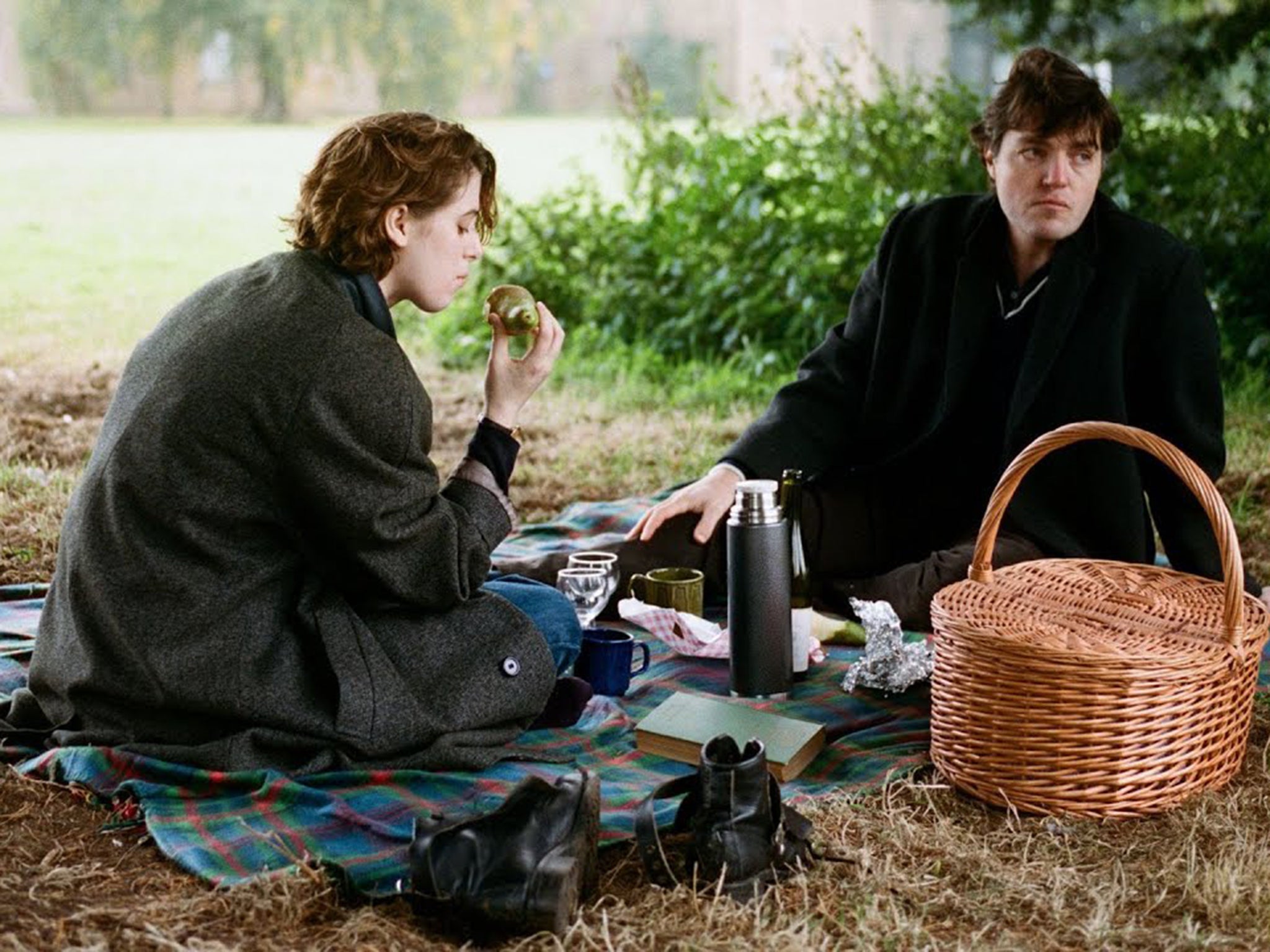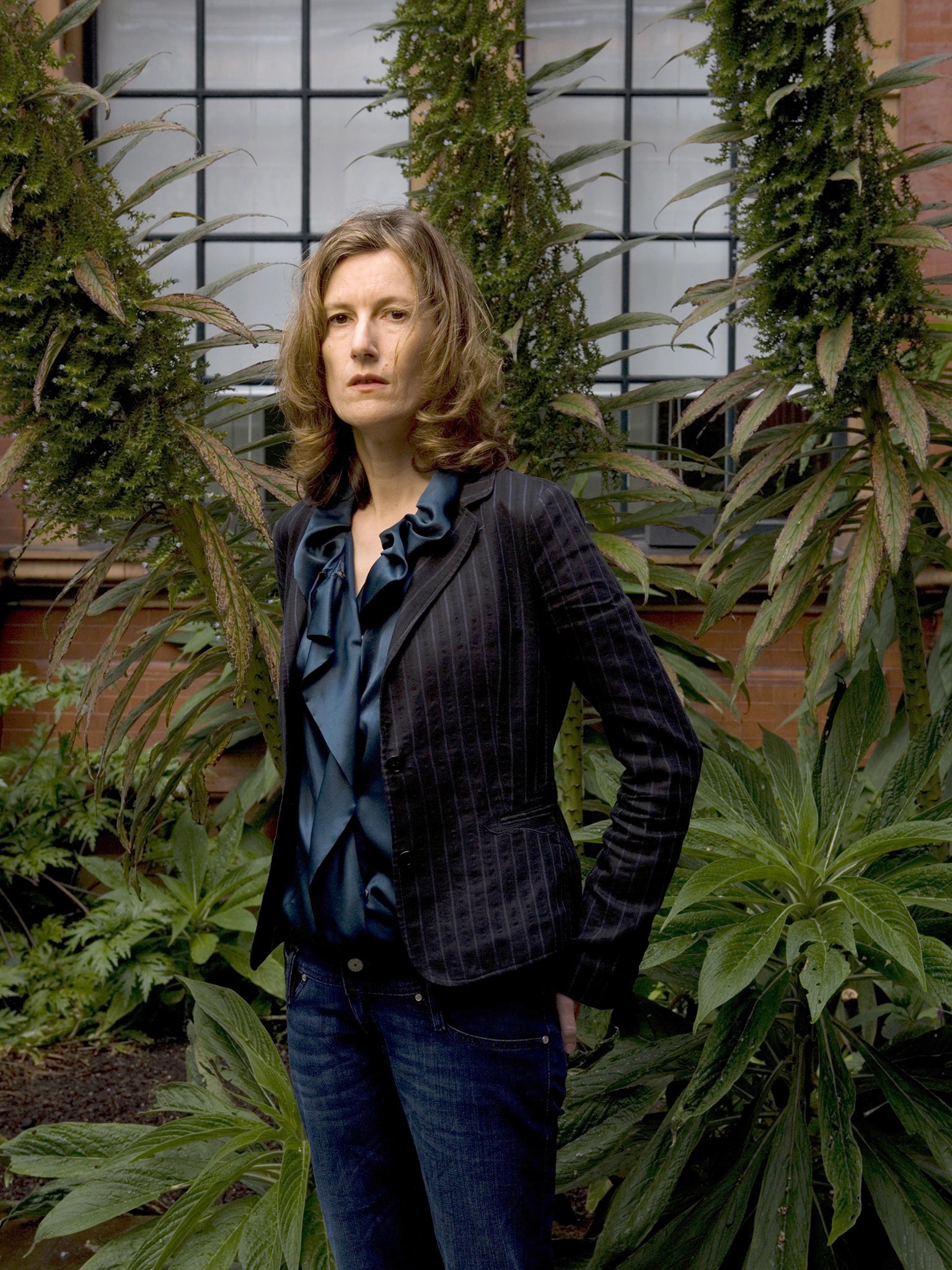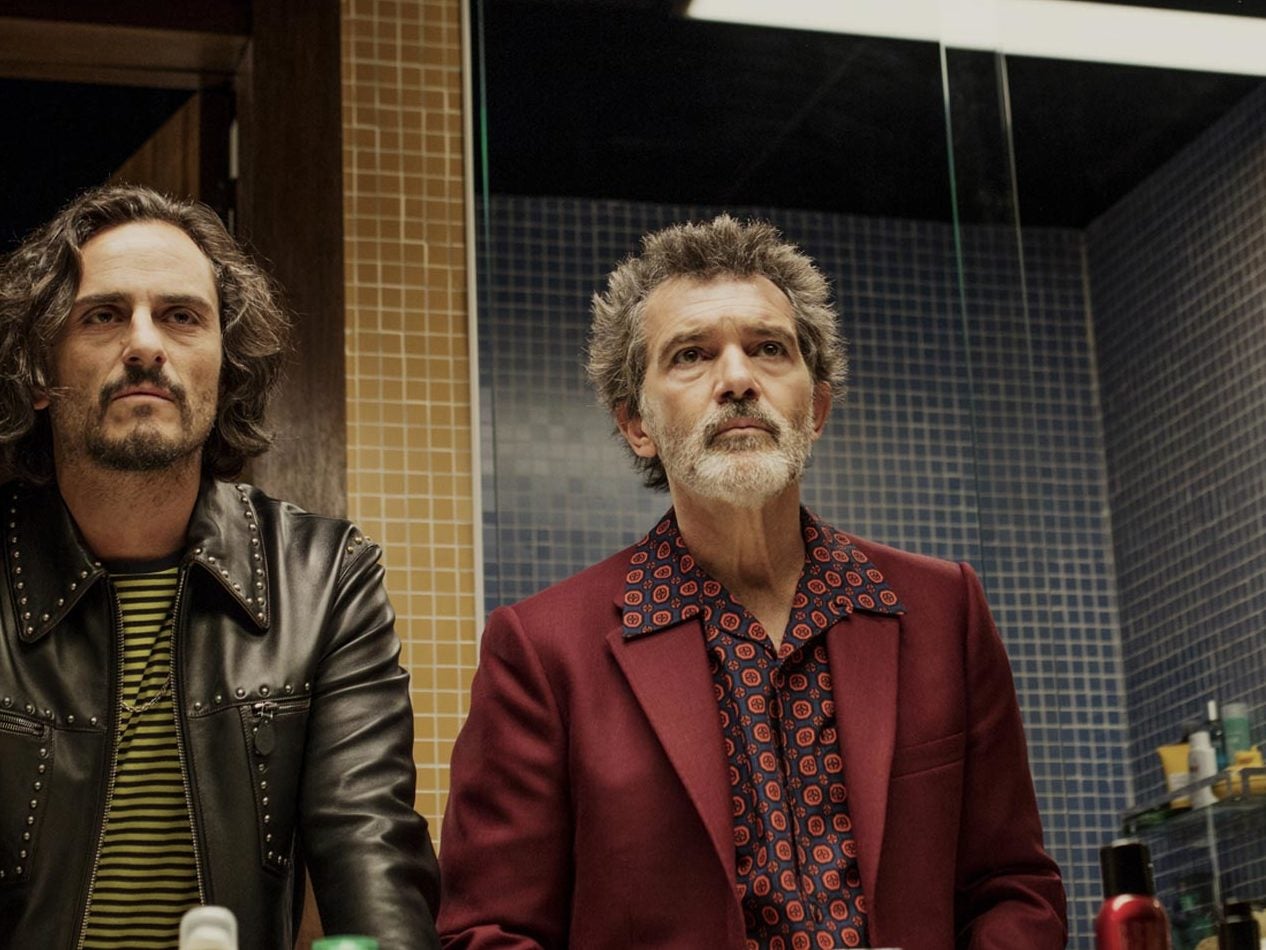Joanna Hogg’s film The Souvenir is loved by critics but shunned by the public – why does this gulf exist?
Sight & Sound magazine has voted 'The Souvenir' the greatest movie of the year, but it reveals how far critical taste is now removed from the appetite of the public, says Geoffrey Macnab

Are they watching the same film? That is the question provoked by the huge difference between the critical and general audience responses towards Joanna Hogg’s latest feature, The Souvenir, which today was revealed as Sight & Sound’s 2019 Best Film of the Year.
The magazine’s editor-in-chief, Mike Williams, said that Hogg’s film “was the overwhelming choice of our 100 voting critics". No squabbles there then.
The Souvenir was greeted rapturously by reviewers when it was released in British cinemas in August. “Achingly well-observed”, “an artefact in the highest auteur register”, “mysterious and beautiful” and “an understated gem of a film” are just some of the compliments lobbed in its direction in the UK press. The story of an affair in the London of the early 1980s between a fiercely intelligent but naive, young film student (brilliantly played by Honor Swinton Byrne) and a louche, worldly-wise older man (Tom Burke) with a drug habit, it is a subtle, understated drama that, in the view of this reviewer at least, has a searing emotional power.
Hogg (who is close to finishing the sequel The Souvenir II) describes it as “an honour and a wonderful thing to be number one” in the magazine’s annual poll, but adds that it also makes her “a little apprehensive".
“The important thing is making work that communicates. It is less about being number one, two or three than about people seeing the work who might not otherwise do so,” she reflects. “I am just not thinking about the audience while I am creating the work so I am very uncompromising in the way that I work. It’s exciting and encouraging to know I can take those risks and not completely fail in the process.”
On the review aggregation website Rotten Tomatoes, Hogg’s movie scores a 90 per cent approval rating from the 158 professional critics whose opinions have been collated, certifying it very fresh indeed, However, the public was markedly much less impressed. The audience score is a very lowly 34 per cent. Based on over 400 user ratings, this marks The Souvenir down as thoroughly rotten. “Possibly the worst film I've ever seen”, “arty and pretentious with totally one-dimensional characters” and “so bad I teared up” are among the brickbats aimed at the picture. Its worldwide box office stands at $1.7m (£1.3m) – that’s to say roughly $1bn behind The Joker, which the critics also liked (69 per cent fresh), but which the general audience liked more (88 per cent fresh).

Ask Hogg about this strange dichotomy and she strikes a philosophical note. “Unless I am spending time reading Twitter or looking at Rotten Tomatoes, you don’t really come across that,” the director says of her detractors. “I don’t necessarily meet them directly. People don’t necessarily say to my face what they think of my films. They’re probably only going to say nice things even if they think otherwise. I am aware that’s out there, that mismatch.
“Of course, I want to reach as many people as possible,” she continues. “But, at the same time, the films are coming from a particular place and have a certain integrity to them. I make the films I want to make and I am not going to please everybody.”
You don’t necessarily expect reviewers and cinemagoers to be on the same page – but you do expect them to be in the same book.
One reason why the Hollywood studios have become so agitated by Rotten Tomatoes is that the professional critics, whose reviews the site collates, are being blamed for driving audiences away from cinemas. In 2017, The New York Times quoted director Brett Ratner as saying that Rotten Tomatoes was “the destruction of our business”. The paper gave examples of blockbuster movies, among them Guy Ritchie’s ill-fated King Arthur: Legend of the Sword, whose dismal box office was blamed on coming up rotten on the critics’ side of the Tomatometer. Potential cinemagoers didn’t read the critics’ individual reviews but just looked at collective scores and the colour of the vegetable. Anything that was a sickly green was to be avoided.
This led to a paradoxical situation, in which critics suddenly seemed very powerful in studio eyes, in spite of writing for publications that were haemorrhaging readers. Their reviews may not have carried much weight individually but once they were processed into the giant Tomato machine, they helped determine not only whether films were fresh or not but whether anybody would go and see them. Blockbusters that had once seemed critic-proof were pronounced dead on arrival thanks to their bad scores. Hollywood reacted by refusing to show certain titles to the press in advance of their release. The theory was that audiences would watch them during the opening weekend, on the back of massive marketing campaigns, without realising quite how bad they were. That was how it used to work in pre-digital and social-media days when all it took to buy an audience was a massive, TV marketing campaign.
Strangely, although the major US film companies have commissioned studies into Rotten Tomatoes and its negative effect on their business, the site is part of ticketing company Fandango Media, which is owned by Comcast Media (also owner of NBC Universal). Former owners Warner Bros retain 30 per cent of the shares. It’s the Trojan horse that the studios themselves have placed inside Hollywood.
The debate around the New York Times article focused on big studio movies. It suggested that where Rotten Tomatoes’ reviewers led, audiences would invariably follow – and that was often away from the cinemas. However, with arthouse and smaller independent films, the same rules don’t apply. The Tomatometer may be able to damage blockbusters but it doesn’t have the same power to turn independent gems into major hits. That’s partly because the smaller films are unlikely to have the marketing might or star wattage to turn their certification “fresh” into extra bookings.
The critics and the public are now also often poles apart. The Souvenir proves as much. It’s a film that is regarded by one of the UK’s oldest film magazines as a masterpiece and the greatest movie of the year, but is shunned by a general audience.
Few of the other titles in the Sight & Sound top 10 have made it into multiplexes either. Mark Jenkin’s low-budget, black-and-white, 16mm, Cornish-set Bait (number eight on the list) is 100 per cent fresh on the Tomatometer but doesn’t yet have an audience score on the grounds that not enough people have seen it. Admirably, many of the other titles on the Sight & Sound list are non-English language: Korean director Bong Joon-ho's Parasite (at number two), French auteur Celine Sciamma’s Portrait of a Lady on Fire at five, Pedro Almodovar’s Pain and Glory at six, Mati Diop’s French drama Atlantics at seven and Portuguese master Pedro Costa’s Vitalina Varela at 10.
Most of these are precisely the films you won’t be able to see at your local cinemas. As the UK’s trade body Film Distributors' Association notes in its most recent year book, “foreign language films have struggled to make their mark in UK cinemas in recent years. It has become extremely challenging to allocate a viable release date for, and then sustain the release of foreign language titles”.
On the one hand, Sight & Sound’s critics are to be praised for championing films that mainstream distributors and exhibitors are shunning. On the other, their list reveals just how far critical taste is now removed from the appetite of the public. Long gone is the time when critics such as Pauline Kael in The New Yorker and Vincent Canby in The New York Times, or Dilys Powell and CA Lejeune in the UK, helped form that taste.
There are many ironies and contradictions here. Arthouse directors often chafe against the tyranny of Hollywood and the crass, mass-market programming of cinema programmers who will show Star Wars or Frozen 2 on every available screen. However, these directors are often every bit as hostile towards sites like Rotten Tomatoes as the studios.

“[With the] internet and social media, instead of truly liberating our minds and hearts in the way we connect to different forms of art, some form of totalitarian taste has developed, pushed by the great corporations and pushed by most critics, especially American and connected to the trade magazines,” Mexican director Carlos Reygadas complained earlier this year.
The frantic attempts of the Cannes Festival to revise its press-screening rules in recent years testifies to the anxiety the festival feels about reviewers. Often, when press screenings pre-dated official gala premieres, films would be condemned before their directors and stars had even had the chance to walk up the red carpet. Judgment would be instant. A handful of influential outlets would determine how the films would be perceived forever afterward. What should have been a celebratory evening gala screening would often feel more like a wake, if the reviews from the morning press screening had been negative.
Placing embargoes or holding the press screenings at the same time as the official screenings (as now happens), is just a way of delaying the verdicts by a few hours. The movies that the critics dismiss will be rejected in turn by distributors and other festival programmers. A herd mentality tends to take hold. It is striking, and dismaying, how many reviews that follow those written and posted by major outlets at big festivals such as Cannes and Venice will adopt exactly the same opinions. There is rarely a counter-current or any chance of redeeming a film’s reputation after the initial thumbs down.
Even more dispiriting is the fact that the films praised by the critics will also often struggle to find an audience.
In Berlin last February, the screenings of Hogg’s The Souvenir were mobbed. Festivalgoers had to fight to get in. That is a very different experience to seeing the film on a wet afternoon at your local rep cinema. The disillusionment felt by all those audience members (“I didn't walk out because it was raining. Two hours of my life I will never get back”) was arguably less to do with the film itself than with the expectations fostered by the critics. The reviews led them to expect a mind-blowing experience. Instead, they encountered a stately, idiosyncratic and very nuanced piece of British arthouse cinema, full of subtle asides about class, gender and generation. Many felt hoodwinked. Avengers: Endgame this wasn’t. You can blame the American bias of the Rotten Tomatoes users. (US cinemagoers may not get all those references in The Souvenir to British music and politics.) Nonetheless, it is to no one’s advantage when the critics’ number one film of the year is being roundly rejected by so much of the audience.
Why does this gulf between critical and popular taste now exist? That is a slippery and complex question that has as much to do with the dominant position that blockbusters now occupy. The superhero movies, big animated films and action franchises take up so much space in cinemas that independent films have begun to seem like an endangered species. The very term, “specialised cinema”, used to describe them, puts them in a ghetto. Hogg herself is one of the founders of A Nos Amours, a cinema collective “dedicated to programming overlooked, under-exposed or especially potent cinema”. In today’s polarised filmgoing culture, those films – many of which are also on Sight & Sound’s top 10 list – need nurturing and patience. Instead, they will be given very limited screening opportunities and yanked unceremoniously from cinemas if they don’t make an immediate mark.
Hogg has an instructive story about how her friend Martin Scorsese (at number three on the Sight & Sound list with The Irishman and also executive producer of The Souvenir) discovered her work. Scorsese saw Hogg’s earlier film Archipelago in 2011 when he was in Britain, shooting Hugo at Shepperton Studios. At first, he didn’t like it at all. “He watched it the first time and after 10 minutes, he switched it off. Then he thought about it, watched it again and came to really like it.” In other words, he gave the film a chance. That is what mainstream audiences aren’t always ready to do with Hogg even as critics swoon over her work. It is surely their loss.
Join our commenting forum
Join thought-provoking conversations, follow other Independent readers and see their replies
Comments